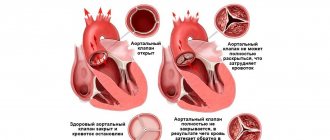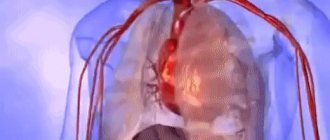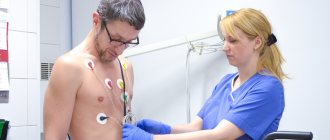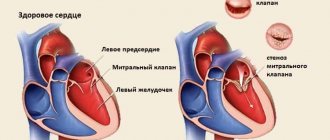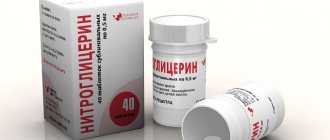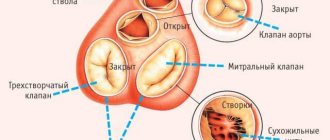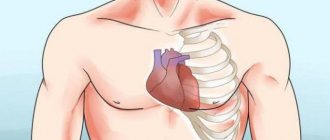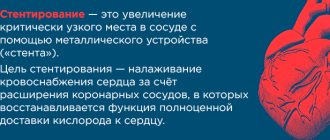0
Author of the article: Marina Dmitrievna
2017.07.19
4 187
Treatment
In pediatric cardiology, surgery occupies one of the main places. Even after eliminating a heart defect in children, therapeutic measures are necessary to consolidate the result.
As can be seen from practice, after heart surgery in children, a favorable effect is achieved in 90 percent of cases. The fact is that babies grow quickly and their weight increases. At the same time, they become more active physically. This activity should be monitored and limited during the recovery period. In cured children, weakness, difficulty breathing, and frequent fatigue disappear. Less common are pneumonia and bronchitis, which occur in patients with excessive pulmonary blood supply. Both hemodynamic and symptomatic parameters return to normal, and constant blood pressure is established. Many young patients have no heart murmurs after surgery.
Pediatric cardiac surgery
Most heart surgeries in childhood are performed against the background of pathologies in the organ, valves, pulmonary system, and diseases of other organs that appear in conditions of long-term pathological blood circulation. So even after surgery, patients should not be considered healthy. In addition to the consequences of the defect, complications can arise from surgery and from the use of artificial blood circulation.
What types of operations are there?
Surgery to reduce the lumen of the pulmonary artery
The doctor, using a special thin band, closes the artery that carries blood to the pulmonary system from the heart, so that less blood enters the respiratory organs. This operation is considered a preparation stage before further elimination of the defect.
The operation is prescribed for frequent surges in pressure in the vascular system, in the event of blood reflux from the left ventricular section of the heart to the right. If the child’s health does not allow an operation to remove the hole in the ventricular septum, then intervention to narrow the lumen of the artery will be his only salvation.
Thanks to this operation, the volume of blood going to the lungs is reduced, thereby reducing the pressure in them. The child's breathing becomes easier.
What are the types of congenital heart defects?
- pulmonary valve stenosis
- stenosis of the aortic valve, aortic orifice, subvalvular stenosis;
- mitral stenosis - narrowing of the bicuspid atrioventricular valve;
- Mitral valve insufficiency - incomplete closure of the bicuspid atrioventricular valve;
- Mitral valve prolapse - excessive length of one or two valve leaflets;
- aortic valve insufficiency;
- tricuspid stenosis;
- triscupidal insufficiency;
- defects of the interatrial and interventricular septum;
- anomalies in the development of heart cavities: Ebstein's anomaly, single atrium, single ventricle;
- transposition of large vessels - aorta and pulmonary artery;
- tetralogy of Fallot;
- open arterial (Botallov) duct;
- coarctation of the aorta;
- The most common congenital heart defect is an abnormal communication between the atria—atrial septal defect.
How is heart surgery performed?
Carrying out the operation
Cardiac surgery consists of the following stages:
- Preparatory stage. Parents must bring their child at the appointed time for an inpatient examination. The child will have to stay there for several days before the operation. In this case, all types of tests, a repeat ultrasound of the heart and an electrocardiogram will be performed. Before the operation, parents need to talk with the anesthesiologist and surgeon. They will additionally examine the little patient and answer questions.
- General anesthesia. A painkiller is injected into the child's vein. During the intervention, the baby will not feel anything. The doctor determines the exact dosage of the medicine, so that parents can make sure that the child will not suffer at all from the anesthesia.
- Making an incision in the sternum to gain access to the heart and connect the small patient to a heart-lung machine.
- Hypothermia is a forced decrease in body temperature. Using special surgical equipment, the child’s blood is cooled to 15 degrees. This event helps the brain easily tolerate the lack of oxygen, which often occurs during surgery.
- The heart, disconnected from the vessels, will not contract for some time. With the help of a coronary pump, the organ is cleared of blood so that the surgeon can complete his task.
- Making an incision in the ventricular region and eliminating the defect. A suture is placed on the incision to join the edges. If the hole is large, the surgeon uses a special patch to eliminate the defect.
- The tightness of the septum between the ventricles is checked, the holes in the ventricular section are sutured, and the heart is connected to the natural circulatory system. The borrowed blood is slowly heated to a standard temperature. As a result, the heart begins to contract on its own.
- The doctor stitches the wound. In this case, there should be a drainage in the neck through which fluid will be drained from the wound.
- Applying a bandage to the child's chest and moving to the intensive care unit. Here the little patient will have to spend about a day under the supervision of doctors. Parents may be allowed to visit the baby, but sometimes this may not be possible.
- After resuscitation, the patient is transferred to the intensive care unit. In this room, parents can stay close to the baby, support and care for him.
Attention! After an operation, a rise in the child’s body temperature to 40 degrees is not a rare or terrible occurrence. There is no need to panic. Just in case, call a doctor or nurse. It should be remembered that a child’s body is much more adapted to the struggle for life and recovers faster from injuries compared to an adult.
Three types of UPS operations by deadlines
The timing of operations for congenital heart defects depends on the severity of the pathology.
Based on the timing of operations, VPS are divided into three types:
- Emergency – when surgical intervention is necessary immediately after diagnosis, since delay threatens the patient’s life.
- Emergency operations are operations that must be done, but there is time so that both the child and the parents can be safely prepared for the operation. Emergency operations allow doctors to collect all the necessary information about the patient by performing the necessary tests.
- Planned surgical treatment of congenital heart defects is performed at a time chosen by both doctors and parents, that is, according to plan. Such operations are permissible in cases where the condition of congenital cardiac pathology does not directly threaten the life of the child. But the operation must be performed so that the condition does not worsen.
Care after heart surgery
When the child is discharged home after surgery, parents should understand that the baby is beginning to recover, but they also need to make some efforts to help him with this.
Baby care
It is advisable to carry the child in your arms more often during this period - this is the so-called positional massage. This is how the baby develops, calms down, and his blood circulation improves. You shouldn’t be afraid that your child will get used to being held, because his health is much more important than his behavior. After this, you can apply for disability for the child.
Adviсe
You need to protect your child from infections and try not to be in crowded places. Don’t be embarrassed to take your baby away from a person who is showing signs of illness. It is recommended to protect the child from prolonged exposure to heat or cold.
Diagnosis and treatment of heart disease
Cardiac surgeons can recognize and eliminate the defect in a timely manner. In most cases, x-ray surgeons close the defect using catheter technology without resorting to an incision.
- A defect may appear between the ventricles of the heart - a ventricular septal defect.
- Often the defects are combined with anomalies of the valvular apparatus of the heart or large vessels.
The valvular apparatus of the heart consists of four valves: mitral (bicuspid), tricuspid (three-cuspid), aortic and pulmonary valve. The functioning of the heart depends on the coordinated and correct functioning of these structures.There are two main types of valve disease: valve insufficiency and stenosis.
When there is insufficiency, the valve leaflets do not close completely, leaving a gap through which blood is thrown in the opposite direction to the normal direction. And with stenosis, the valves do not open completely, preventing normal blood flow. Isolated lesions of the heart valves are relatively rare; they are very often observed in other congenital heart defects. For example, a bicuspid acortical valve is often found in people with a patent ductus arteriosus. With this defect, part of the blood (rich in oxygen) from the aorta, which is not closed after the birth of the child, enters the pulmonary artery, causing an overload of the right side of the heart. In children and adolescents, such an abnormal message is most often eliminated without surgery, by installing a “plug” through the catheter.
- Another congenital malformation is stenosis of the descending aorta.
In the thoracic segment, the aorta is attached to the posterior wall, closer to the spine. At this point, the aorta is sometimes significantly narrowed, and the internal organs do not receive enough arterial blood. Previously, this condition, called coarctation of the aorta, could only be corrected with surgery. But today, in most cases, narrowing during coractation of the aorta is eliminated by balloon dilation and installation of a stent frame. It should be emphasized that if valve stenosis is an isolated lesion, it is often eliminated by balloon expansion, in a minimally traumatic way.
How to care for a wound?
The scar will take four weeks to heal. It is recommended to wipe it with calendula tincture and avoid direct exposure to the sun's rays. To prevent the formation of a scar, you can use creams such as Solaris or Contractubex. The doctor will recommend a remedy that is suitable for the baby.
When the stitches after heart surgery have healed, you can begin to bathe the child. To do this, use boiled water the first few times. Her temperature is 37 degrees. Reduce the duration of hygiene procedures.
The sternum is a bone, it takes two months to heal. During this time, you should not take the child under the armpits, pull him by the hand, or lay him on his tummy; he needs to sleep on his side. It is better to avoid physical activity so that the chest does not become deformed. When the bone heals, there is no need to limit the baby’s physical activity. But for the first six months it is better to avoid injuries so that the child does not become disabled.
Heart disease – is surgery always necessary?
Heart disease is an anomaly or defect in the structure that affects the valves, septum, and other parts of the organ. Their occurrence leads to impaired blood circulation and insufficient oxygen supply to tissues.
What are the risk factors?
Heart disease can be congenital or acquired.
An acquired defect can occur at any age. The most common causes are rheumatism, hypertension, ischemia, syphilis, and cardiosclerosis. Almost half of the cases are an anomaly of the mitral valve, and in about a quarter of cases there is a defect of the semilunar valve.
In addition to these options, the following types of anomalies are recorded:
- Prolapse. It is characterized by swelling or protrusion of the valve, everting of the valves into the cavity of the heart.
- Stenosis. The cause is scarring due to the inflammatory process, resulting in a narrowing of the hole.
- Mitral valve insufficiency. Sclerotization leads to incomplete closure of the valves. As a result, blood flows back into the left atrium. To redirect blood flow in the correct direction, greater force of heart contractions is required, which leads to hypertrophy.
Congenital heart defects form during fetal development. Reasons can be internal and external:
- internal causes are caused by hormonal disorders and hereditary traits transmitted through the parents;
- external causes include the impact of environmental factors on the body of the mother and fetus, diseases of the mother suffered during pregnancy, and the use of certain medications.
8
24/7
Depending on the number of affected valves and holes, the following are distinguished:
- Simple vices. The anomaly affects the element.
- Complex. There is a combination of 2 or more violations.
Based on location, valve defects and septal defects are distinguished.
Classification depending on hemodynamics.
- compensated defects – the violations that occur are compensated by the system;
- subcompensated defects – characterized by incoming decompensation;
- decompensated defects - circulatory failure develops, the body is not able to compensate for the violations.
Causes
Such heart valve disease as mitral valve insufficiency is acquired.
There are 3 types:
- With relative insufficiency, the anomaly does not affect the valve itself. The hole becomes larger and he cannot close it.
- Organic failure is a consequence of the appearance of fibrous tissue on the valves, which causes them to shorten.
- Functional failure is characterized by disturbances in the functioning of the muscular apparatus that regulates the activity of the valve.
Aortic valve insufficiency is more common in men; in half of the cases it is combined with mitral defects. Develops against the background of rheumatic and atherosclerotic lesions of the aorta. It is accompanied by a backflow of blood into the left ventricle, which leads to its stretching.
The main causes of aortic stenosis are rheumatic endocarditis and atherosclerosis. With stenosis, the cusps of the semilunar valve of the aorta become fused, causing blood to not be completely pushed out of the ventricle.
Symptoms
Symptoms of mitral insufficiency:
- acrocyanosis;
- change in color of lips and cheeks to bluish pink;
- dyspnea;
- increased heart rate;
- swelling of the veins in the neck;
- increase in liver size;
- trembling of the chest, which can be felt even just by placing your hand.
This mitral heart disease develops against the background of rheumatoid endocarditis. It is extremely rare in isolated form, more often diagnosed as a combined pathology (in combination with anomalies of the aortic and tricuspid valves). In rare cases, it can act as a congenital heart defect. The anomaly leads to a change in the shape of the valve, it becomes funnel-shaped. The full volume of blood is not ejected into the left ventricle from the atrium. Against this background, pressure in the atrium and blood vessels increases, which can lead to pulmonary edema.
Aortic heart disease occurs when the semilunar valves do not close sufficiently.
Symptoms:
- headaches and dizziness;
- dyspnea;
- orthostatic fainting;
- general weakness;
- paleness of the skin;
- feeling of increased pulsation;
- symptoms of Musset, Landolfi.
8
24/7
Symptoms of aortic valve insufficiency:
- at the stage of decompensation, diastolic pressure decreases greatly, dropping to almost 0;
- with a rapid change in body position, dizziness occurs, and at night - attacks of suffocation;
- paleness of the skin, pulsation in the neck is noticeable to the naked eye, and the pupils of the eyes pulsate.
Combined aortic heart disease is a combination of two disorders. It combines valve insufficiency and narrowing of the aortic mouth. It manifests itself with signs similar to stenosis, but they are less pronounced. In severe forms, there is stagnation of blood in the small circle, cardiac asthma and pulmonary edema occur.
Signs of aortic stenosis:
- chest pain resembling angina pectoris;
- headache;
- fainting;
- dizziness;
- paleness of the skin;
- decreased and weak pulse;
- decrease in systolic blood pressure;
- maintaining normal diastolic pressure.
Tetralogy of Fallot is the most severe congenital heart defect observed in newborns. It is characterized by narrowing of the pulmonary artery and its incorrect exit from the left ventricle, enlargement of the hole in the interventricular septum, and disruption of the location of the aorta.
Symptoms:
- the occurrence of cyanosis even after light exertion;
- severe shortness of breath;
- loss of consciousness;
- dysfunction of the intestines and stomach;
- nervous system disorders;
- slow growth and development.
A patent foramen ovale is a defect in which the septum between the atria does not heal. If the window size is small, no significant disturbances occur and intervention is not required. With a large hole, acrocyanosis and shortness of breath are observed as symptoms.
Diagnostics
Diagnosis is made using methods such as:
- physical examination;
- ECG;
- radiography of the heart;
- MRI;
- laboratory tests: rheumatoid tests, blood and urine tests, determination of blood sugar and cholesterol levels.
Treatment
When a heart defect is discovered, surgery is not the only option. Treatment begins with the use of conservative techniques. Drug treatment is aimed at preventing complications and relapses of the disease, which became the root cause of the development of defects.
Drug therapy can include vasodilators, diuretics, cardiac glycosides, and anti-arrhythmia drugs.
If complications are likely, antibacterial drugs and anticoagulants (blood thinners) may be prescribed.
If it is necessary to eliminate a heart defect, treatment depends on what kind of pathology the patient has. The most common type is ventricular septal defect. If the hole in the septum is small in size and does not affect the blood circulation process, then surgical intervention is not required. In case of serious anomalies, an operation is required, during which the hole is sutured and the septum returns to its normal appearance.
In the absence of a septum, surgery is also necessary - the sooner it is performed, the more favorable the prognosis.
With an open oval window, surgical intervention is required when the defects are severe and dangerous.
For mild combined aortic disease, symptomatic treatment is carried out, and measures are taken to prevent the development of complications. In severe cases, surgery and replacement of the valve or dissection of the valves that have grown together are required.
For aortic valve insufficiency, treatment depends on the stage of decompensation. In case of compensated disorder, preventive treatment is carried out; in case of decompensated disorder, surgery is required.
Forecast
The prognosis depends on the existing anomaly.
The prognosis for ventricular septal defect is favorable – patients live long. If it is absent or has a significant defect without proper treatment, the chances of surviving to 20-30 years are low.
If an open oval window is diagnosed, then with an isolated defect the prognosis is favorable. If this is a combined pathology, then it all depends on the degree of blood flow disturbance.
When the aorta is narrowed, the prognosis is good if a graft is installed at the site of the affected area of the vessel.
Patients with mitral valve insufficiency can live a long time. However, it is important to monitor your health and prevent the development of inflammatory diseases. The damaged valve needs to be replaced.
After surgery for mitral stenosis, the prognosis is also favorable, but requires special courses of treatment.
An unfavorable prognosis for heart defects is observed with tetralogy of Fallot.
An unambiguous prognosis cannot be given for stenosis of the pulmonary artery. It depends on the complications that arise.
Prevention
If you have heart defects, you need to coordinate physical activity with your doctor. In most cases, they are necessary to maintain the functionality of the body.
Complexes of health-improving exercises are performed to prevent heart disease.
If suspicious symptoms or chest pain occur, you should contact a specialist for examination. It is important to eliminate all infectious and inflammatory diseases, preventing them from becoming chronic.
A timely visit to a cardiologist will allow you to begin treatment at an early stage, before irreversible consequences develop.
8
24/7
Dangerous post-operative symptoms
Examination of the child
If the following symptoms appear, you should immediately go to the hospital:
- The temperature rises above 38 degrees for no apparent reason.
- The suture swells and ichor comes out of it.
- The child has chest pain.
- The skin becomes pale or bluish.
- The face swells, swelling occurs under the eyes.
- Shortness of breath and lethargy.
- Doesn't sleep well.
- Vomiting and dizziness.
- Loses consciousness.
How do heart valve diseases manifest?
Most often, patient complaints are nonspecific: shortness of breath, rapid pulse, arrhythmia, fatigue, cyanosis, dizziness.
The severity and nature of symptoms depend on the location of the affected valve. With valve defects of the left half of the heart (mitral and aortic), the lungs are primarily affected, because Blood stagnates in their vessels, which manifests itself as shortness of breath. There are also signs of insufficient blood supply to all organs and systems, primarily the brain and the heart itself. Dizziness, fainting, and angina occur. If the functioning of the valves of the right half of the heart (tricuspid and pulmonary valves) is disrupted, blood stagnates in the vessels of the systemic circulation, i.e. all organs except the lungs are affected. Swelling of the legs and feet, ascites (fluid in the abdominal cavity), enlargement of the liver, etc. develop (LIVER INCREASES, ETC.).
Heart valve defects are dangerous due to their complications and impact on the body, so the main prevention of pathological conditions is regular examinations and treatment of diseases leading to the formation of valve defects.
Symptoms
Photo: gorlor.com
The symptoms of congenital heart disease are very diverse, and it can easily be confused with some other ailments of the body. It is not at all necessary that a congenital heart defect will manifest itself immediately after birth. There are often cases when ultrasound machines fail to detect this defect in the development of a young heart during pregnancy. A newborn child can please parents for some time, who will not even realize that the baby is unwell.
Symptoms of congenital heart disease in newborns.
The main symptom at such an early age is a heart murmur. At this stage of life, only timely visits to the pediatrician will help determine it. By carefully listening to the heart, an experienced doctor can easily diagnose signs of congenital heart disease. Mothers should also observe the color of their child’s skin. As a rule, due to insufficiently active blood circulation and oxygen saturation, the skin may become pale, and in some cases even bluish. Other symptoms of congenital heart disease include lethargy and rapid heartbeat. Nursing mothers should pay attention to their baby's appetite. If your newborn spits up frequently and does not breastfeed well, consult a specialist immediately. However, the most noticeable sign of congenital heart disease is crying. In the first days of life, children are often capricious, since their body is still adjusting to stable functioning, but if the baby begins to turn blue, this should already be a wake-up call.
Symptoms of congenital heart disease in children.
The main symptoms of congenital heart disease may not appear until the age of two. The most noticeable sign of heart disease in children is shortness of breath, and strong physical exertion is not necessary. It is enough for a child to simply recite a rhyme or talk for a while to feel the lack of air.
At the age of 8 to 12 years, a child may develop a sign of congenital heart disease such as frequent headaches. As a rule, they are accompanied by weakness and dizziness and even fainting, especially in exciting or emergency situations, so you should not expose the child to emotional stress and changes. It is also worth paying attention to the child’s complaints. Excessive heart and pulse rhythms are just a few accompanying signs of the disease. In addition to the general picture of malaise, periodic pain in the heart, abdomen and the entire lower body as a whole may also be added. As a result of these symptoms, there may even be a delay in mental and physical development (both of the whole organism and individual organs). Most often, the growth and development of the limbs of the body, both bone and soft muscle tissue, partially or completely freezes.
Symptoms of congenital heart disease in adolescents.
By the symptoms of congenital heart disease, you can determine the disease not only in a baby, but also in a teenager. As a rule, the main difference in the patient's appearance is the bluish discoloration of the skin around the mouth. In some cases, the blue discoloration may spread to the ears and nose. The fingers and toes are also blue. In addition, the outer phalanges thicken, and the nail plates become almost round. This symptom is usually called the “watch glass” or “drumstick” syndrome.
Unreasonable swelling of the feet and legs may also indicate problems with the heart.
However, external differences are not the only sign of congenital heart disease. It is worth paying attention to human behavior. As a rule, people with such a disease are rarely the “ringleaders”. Most often these are inactive, phlegmatic teenagers. They prefer quiet rest in the shade to active games.
Symptoms of congenital heart disease in an adult.
You can also recognize an adult with symptoms of congenital heart disease by such a sign as “heart hump”. This concept is usually called a change in the volume of the chest in a larger direction.
A person with congenital heart disease should constantly monitor his hemoglobin levels. As a rule, in such people it is higher than normal.
There is another symptom that is common to all ages and categories - susceptibility to viral lung diseases. Pulmonary diseases will haunt a person at all stages of his life until surgery occurs and the congenital heart defect is eliminated.
In other words: no matter who you are, an adult or a child, you should not overestimate your health. Listen to your body and pay attention to changes in it, because it may be a symptom of a particular disease.
Cost of the operation
A person who needs such a procedure sooner or later wonders how much it will cost him? How much money will be required, and what does the price depend on?
The cost of surgery depends on several factors:
- workload;
- name and fame of the doctor, clinic;
- patient status.
Taking this into account, approximate price tags have been developed for certain operations to eliminate heart defects:
- Approximately a quarter of a million dollars will be required for a heart transplant. An alternative could be a free transfer, which is carried out on a first-come, first-served basis. Since these queues are quite long, there is a risk of not making it to the right moment.
- From 500 to 3 thousand dollars will be required to eliminate defects of the septum of the heart. Valve replacement and repair are included in this category. The price of heart surgery varies due to the factors listed above.
- A minimally invasive type of intervention has a relatively low cost, which depends on the same factors.
Based on all of the above, we can get an approximate picture of what is happening on the medical services market in this area. The picture is not very rosy; not everyone can cope with such prices for operations. There is only one way out - collecting the necessary documents and obtaining a state quota.
The price is especially high if the heart disease is serious, and the intervention of a famous doctor working in a prestigious clinic is required. In this case, the price may double or even more.
Don't be careless about your health. Such negligence, combined with serious heart disease, is a direct path to death. At best, it will be quick and relatively painless. At worst, a person will experience severe pain for a long time. To avoid such a fate, just don’t be lazy and go to the hospital if you feel unwell.
